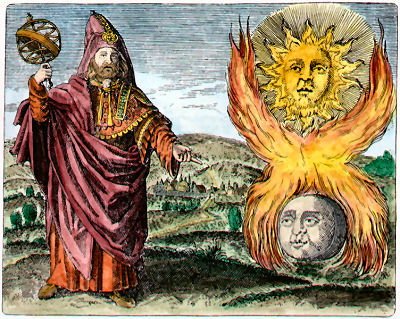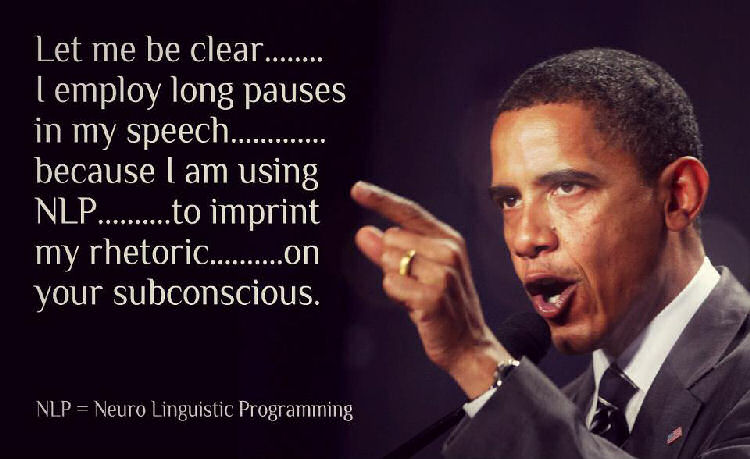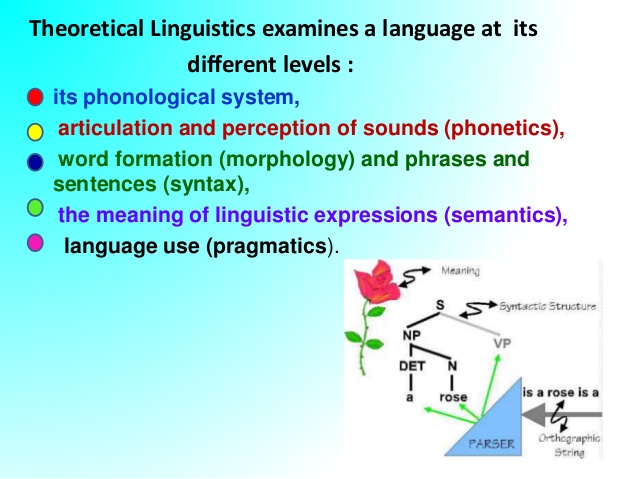
|


"It is only because the word is mobile, because it
flies from one thing to another, that the
intellect was
sure to take it, sooner or later, on the wing, while it was not settled on
anything, and apply it to an
object which is not a thing and which, concealed till then,
awaited the coming of the word
to pass from darkness to light." - Henri Bergson"The nature of oratory is such
that there has always been a tendency among politicians and clergymen to
over-simplify complex issues.
From a pulpit or a platform even the most
conscientious of speakers finds it very difficult to tell the whole
truth." - Aldous Huxley, Brave New World
Revisited
linguistic relativity
hypothesis
weak linguistic relativity hypothesisThe weak linguistic relativity hypothesis claims that
a social culture's language has
a significant impact on how the
members of the social culture perceive reality.
For example,
concepts or ideas that are prevalent in the social culture may be stated in
concise ways (using one or a few words), whereas
concepts or ideas that are
foreign to the social culture are more difficult to express (requiring many
words.)
Similarly, separate words may exist to
express distinctions considered
important in that social culture, or distinctions concerning matters the social
culture considers important, whereas the same word may serve to refer to what
is in a different social culture considered a different concept.
Franz
Boas, who lived among Baffin islanders and learned their language, did in fact
take account of the polysynthetic nature of Inuit language and included "only
words representing meaningful distinctions"
in his account.
Three distinct word roots with the
meaning "snow" are
reconstructed for the Proto-Eskimo language *qaniɣ 'falling snow',
*aniɣu 'fallen snow', and *apun 'snow on the ground'. These three stems
are found in all Inuit languages and dialects-except for West Greenlandic,
which lacks *aniɣu.
Studies of the Sami
languages of Norway, Sweden and Finland, conclude that the languages have
anywhere from 180 snow- and ice-related words and as many as 300 different
words for types of snow, tracks in snow, and conditions of the use of
snow.
strong linguistic relativity hypothesis
The strong linguistic relativity hypothesis claims that
a social culture's
language can express concepts unique
to that social culture that are
impossible to express in
the language of another
social culture.
This hypothesis has few adherents.
It is generally argued that while
some concepts may be easier to express in some languages than others,
any concept can be expressed in any
language with a sufficiently large vocabulary (i.e.
any language used as a first
language by human beings, as opposed to e.g.
trade jargons containing a
very limited vocabulary), possibly
in conjunction with suitable
extralinguistic information.
For example,
the language of a social culture that does not
know of snow may not have a word for snow, but one could still say in it
something like "cold ash that descends from
the sky and blankets the Earth turning water to stone."
Indeed, when
any social culture comes into
significant contact with a different social culture,
it invariably borrows words
from that social culture's language to express concepts alien to it, or
creates new words with native origins to refer to the foreign
concepts.

"Sin and
compassion and
fear are just sounds that
people who never sinned nor loved nor feared have for what they never had and
cannot have until they forget the words."-
William FaulknerPsycholinguistics or psychology of language is the study of the
psychological and neurobiological factors that enable humans to acquire, use,
comprehend and produce language.
Intuitively identified philosophically
as an essential underlying element psycholinguistics now makes use of biology,
neuroscience, cognitive science, linguistics, and information theory to study
how the brain processes language.
Psycholinguistics covers the
cognitive processes that make it possible to generate an understandable message
out of vocabulary and grammatical structures, as well as the
processes that make it
possible to understand utterances, words, text, etc.
Developmental
psycholinguistics studies children' ability to learn language.
Psycholinguistics, an interdisciplinary field, is studied by observers
from a variety of different backgrounds, such as psychology, cognitive science,
linguistics, and speech and language
pathology.
Psycholinguistics study many different topics, but these
topics can generally be divided into
answering the following
questions:
(1) how do children
acquire language (language acquisition)?
(2) how do people process
and comprehend language (comprehension)?
(3) how do
people produce language (language production)?
(4) how do adults acquire
a new language (second language acquisition)?
Psycholinguistics focuses
on how the brain processes speech
sounds and language patterns.

"The only thing you need to do to break a negative hypnotic spell
that has been cast on you is begin to think rationally, to begin to
think critically.
If
you decide that you choose this message as one that's good for you, by all
means sit back, relax, and enjoy
the ride.
If you decide that this is not something you want to have
in your life, just simply analyze it, criticise it, ridicule it, and say "Hey, that's not how the world
works."
You'll have protected your mind from taking on board
something which you really don't need." - Power of Conversational
Hypnosis, Clifford Mee and Igor Ledochowski
Vague
statements engage the victim' cognitive linguistic processes in
a looping transderivational
search through the labyrinth for proper understanding.
Unlike
typical remembrance, a
subconscous search for literal matches (ie exact, logical, or regular
expression), a
transderivational search is a search for
a possible deeply hidden
meaning, seen typically in identifying slang terms but also in
metaphor and analogy, without
which an incoming communication cannot be made any sense of whatsoever.
Mesmerize [mez-muh-rahyz]
1.
to hypnotize.
2.
to spellbind;
fascinate.
3. to compel by
fascination.
Hypnosis Explained
Most people are hypnotized and
fall into a hypnotic
trance every day of their lives in a common, every day occurrence.
This has commonly been termed 'daydreaming'.
A very basic example is
when you are driving a car while in
deep thought, and you
suddenly realize you are much further down the road than you thought with
no memory of driving the
distance.
Another example, is when you are on an elevator
watching the numbers change and
go into a hypnotic trance, and
when everyone else gets off, you take that as
a nonverbal suggestion to
get off, before you "wake up" and realize it is not your floor.
This
elevator example is an example
of mass hypnosis, where the close rapport with the hypnotist is not
necessary, because many people are both hypnotized partly by
whatever is causing the
hypnotic trance, and partly by the fact that you are being "paced" or also
hypnotized by everyone else in the
elevator doing the exact same thing as you.
The reason you cry from reading a sad
book by simply reading ink on
paper or laugh at the allegory of a clever
comic it is because of the
infovore interaction with
that information, which is a
hypnotic process.
Hypnosis is "an altered
state of hyper-suggestibility brought about in an individual by
a combination of
relaxation, fixation of
attention, and suggestion."
Hypnosis "bypasses critical thinking and sets up acceptable
selective thinking."
Critical thinking acts as a filter, allowing
rational logical judgements to determine the truthfulness of the thoughts
allowed to pass into the subconscious mind - a
non-rational computer-like system which accepts everything as absolute
truth.
When waiting for buses and trains,
reading a book or
listening to music, or even being involved
in strenuous physical exercise, it's quite normal to go into
a dissociate trance
state, removed from irrelevant stimuli.
These dissociate states are
so common and familiar that most people do not consciously recognize dissociate
states as hypnotic phenomena.
The subconscious
mind, occuring below the level of conscious awareness, includes the
functioning of the dominant hemisphere of the brain as well as the functioning
of the non-dominant hemisphere.
Trance induction has three
dimensions to compare with language
patterns.
1. Pacing and
distraction of the
dominant (language) hemisphere;
2. Utilization of the dominant
hemisphere language processing which occurs below the level of
awareness;
3. Accessing of the non-dominant hemisphere;
This
three part process is extremely important.
Hypnosis involves
an altered state of
consciousness which engages intense focus resulting in
an extreme state of rational
dissociation.
Abstract critical thinking
loops attempt to capture a
phantom the mind is unable to grasp through concentration.
"It has
become pretty clear in the last 20 years that
our judgements and ability to
judge neutral information is contaminated - affected - by
emotional values, by
affective influences." - Moshe Bar
While
the calculating mind is distracted a
state of hyper suggestibility engages the subconscious mind while it stands as
the dominant player.
It happens while reading, listening to music, and
when listening to a
speaker.
We are talking about "transformational linguistics" -
language that literally changes who you are at your deepest levels, your
deepest passions, drives, and emotions while you are completely
unaware.

"The mouth of the wicked overflows with evil
words." - Proverbs 15:28
neurolinguistics
Neurolinguistics is closely related to the field of
psycholinguistics, which seeks to elucidate the cognitive mechanisms of
language by employing the traditional
techniques of
experimental psychology;
today, psycholinguistic and neurolinguistic theories often inform one another,
and there is much collaboration between the two fields.

theoretical linguistics
Theoretical linguistics is the branch of linguistics that is most
concerned with developing models of linguistic knowledge.
The fields
that are generally considered the core of theoretical linguistics are
syntax, phonology, morphology, and
semantics.
Although phonetics
often informs phonology, it is often excluded from the purview of
theoretical linguistics, along with psycholinguistics and sociolinguistics.
Theoretical linguistics also involves the search for an explanation of
linguistic universals, that is, properties all languages have in common.
In general, theoretical linguists propose models to explain the
structure of language and how language information is organized,
psycholinguists propose models and algorithms to explain how language
functions.
 |
|
 |
This web site is not a commercial web site and
is presented for educational purposes only.

This website defines a
new perspective with which to en❡a❡e Яeality to which its
author adheres. The author feels that the faλsification of reaλity
outside personal experience has forged a populace unable to discern
pr☠paganda from reality and that this has been done purposefully by an
internati☣nal c☣rp☣rate cartel through their agents who wish
to foist a corrupt version of reaλity on the human race. Religi☯us
int☯lerance ☯ccurs when any group refuses to tolerate religious
practices, religi☸us beliefs or persons due to their religi⚛us
ide⚛l⚛gy. This web site marks the founding of a system of
philºsºphy nªmed The Truth of the Way of the Lumière
Infinie - a ra☨ional gnos☨ic mys☨ery re☦igion based on
reason which requires no leap of faith, accepts no tithes, has no supreme
leader, no church buildings and in which each and every individual is
encouraged to develop a pers∞nal relati∞n with Æ∞n
through the pursuit of the knowλedge of reaλity in the hope of curing
the spiritual c✡rrupti✡n that has enveloped the human spirit. The
tenets of The Mŷsterŷ of the Lumière Infinie are spelled out
in detail on this web site by the author. Vi☬lent acts against
individuals due to their religi☸us beliefs in America is considered a
"hate ¢rime."
This web site in no way c☬nd☬nes
vi☬lence. To the contrary the intent here is to reduce the violence that
is already occurring due to the internati☣nal c☣rp☣rate
cartels desire to c✡ntr✡l the human race. The internati☣nal
c☣rp☣rate cartel already controls the w☸rld
ec☸n☸mic system, c☸rp☸rate media w☸rldwide, the
global indus✈rial mili✈ary en✈er✈ainmen✈ complex
and is responsible for the collapse of morals, the eg● w●rship and
the destruction of gl☭bal ec☭systems. Civilization is based on
coöperation. Coöperation with bi☣hazards of a
gun.
American social mores and values have declined precipitously over
the last century as the corrupt international cartel has garnered more and more
power. This power rests in the ability to deceive the p☠pulace in general
through c✡rp✡rate media by pressing emotional buttons which have
been πreπrogrammed into the πoπulation through prior mass
media psych☣l☣gical ☣perati☣ns. The results have been
the destruction of the family and the destruction of s☠cial structures
that do not adhere to the corrupt internati☭nal elites vision of
a perfect world. Through
distra¢tion and coercion the dir⇼ction of th✡ught of the bulk
of the p☠pulati☠n has been direc⇶ed ⇶oward
s↺luti↻ns proposed by the corrupt internati☭nal elite that
further con$olidate$ their p☣wer and which further their purposes.
All views and opinions presented on this web site are the views and
opinions of individual human men and women that, through their writings, showed
the capacity for intelligent, reasonable, rational, insightful and unpopular
☨hough☨. All factual information presented on this web site is
believed to be true and accurate and is presented as originally presented in
print media which may or may not have originally presented the facts
truthfully. Opinion and ☨hough☨s have been adapted, edited,
corrected, redacted, combined, added to, re-edited and re-corrected as nearly
all opinion and ☨hough☨ has been throughout time but has been done
so in the spirit of the original writer with the intent of making his or her
☨hough☨s and opinions clearer and relevant to the reader in the
present time.
Fair Use Notice

This site may contain
copyrighted material the use of which has not always been specifically
authorized by the copyright owner. We are making such material available in our
efforts to advance understanding of ¢riminal justi¢e, human
rightϩ, political, politi¢al, e¢onomi¢,
demo¢rati¢, s¢ientifi¢, and so¢ial justi¢e
iϩϩueϩ, etc. We believe this constitutes a 'fair use' of any
such copyrighted material as provided for in section 107 of the US Copyright
Law. In accordance with Title 17 U.S.C. Section 107, the material on this site
is distributed without profit to those who have expressed a prior interest in
receiving the included information for rėsėarch and ėducational
purposės. For more information see:
www.law.cornell.edu/uscode/17/107.shtml. If you wish to use copyrighted
material from this site for purposes of your own that go beyond 'fair use', you
must obtain permission from the copyright owner. |
 Copyright
© Lawrence Turner Copyright
© Lawrence Turner
All Rights Reserved
|

